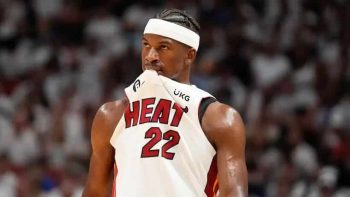NBA
NBA AM: The Truth About Qualifying Offers

While most NBA fans made the “blinking guy meme” face upon reading that Dallas Mavericks big man Nerlens Noel had passed up $70 million guaranteed to take the team’s $4.1 qualifying offer, the player himself clearly believes there’s a bigger number awaiting him on the other side of the 2017-2018 season.
There have not been many players to do this over the course of the last fifteen years. Four players signed qualifying offers in 2012 (Ivan Johnson, Devin Ebanks, Luke Harangody and Darius Morris), but that was the most in any season since 2002, and none of them were big names. Most years there only are one or two players to take this risk. This year, so far, it’s just Noel.
Because so few players (and agents) have gone this route over the years, it is hard to get a sense of what this really means for Noel’s future, both in terms of his tenure in Dallas and in terms of bank account. Some trends in that small sample size, however, suggest a couple of interesting outcomes.
First, only one player since 2002 has signed the qualifying offer and then returned to his team. That was Spencer Hawes, who signed a $4 million qualifying offer in 2011 only to re-sign with the Philadelphia 76ers the following summer for two more years at $13.1 million. Literally, every other player to take the QO has gotten out of Dodge as soon as humanly possible, and considering how unhappy Noel appears to be with the efforts Dallas made to keep him this summer, the same departure could be looming for him next summer.
It also is incredibly rare for a player to come out of having signed a qualifying offer with max money. Only Greg Monroe, who took the QO from Detroit back in 2014, has come out of it with a max-salary deal. In 2014-2015, Monroe played out a $5.5 million QO before getting three years and $51.4 million from Milwaukee the following offseason. Nobody else has ever done it.
Only Ben Gordon (five years, $58 million) has come close. For him, the prospect of signing that qualifying offer in 2008 was essentially unprecedented. At the time, Chicago was believed to have offered him something in the neighborhood of six years and $59 million, which was a deal so insulting to Gordon that he reportedly considered skipping the QO altogether and playing a season in Russia.
Instead of a six-year deal worth $59 million, Gordon earned $6.4 million on the qualifying offer and then another $58 million in the five years that followed. It turned out he was right about being worth more than Chicago wanted to pay him.
Monroe did not regret his decision, either. Whatever salary numbers may have popped up in salary negotiations with Detroit and the handful of other teams he met with during free agency, none apparently were of the max variety. Ironically, Monroe hungrily signed a deal in 2015 worth as much annually as the contract Noel just spurned, but the financial landscape of the NBA obviously has changed a lot over the course of the last two seasons. Still, wealth is in the eye of the beholder, apparently.
Recent changes in the salary cap have Noel seeing a whole lot of really big paychecks dancing in his head at night like sugarplums. Like Monroe, who watched Chandler Parsons and Gordon Hayward sign massive offer sheets with other teams as restricted free agents in 2015, Noel clearly has seen too much money getting doled out the past two offseasons and is ready to cash in himself.
Now, of course, it’s a game of poker. Monroe and Gordon eked out extra money by betting on themselves, but not with their original teams. History suggests the same could be true for Noel, but it also suggests that getting more than $17 million a season might not be as sure a thing as he believes it will be.
Chips on the table, all he and the Dallas Mavericks front office can do now is wait and see how the cards play.













